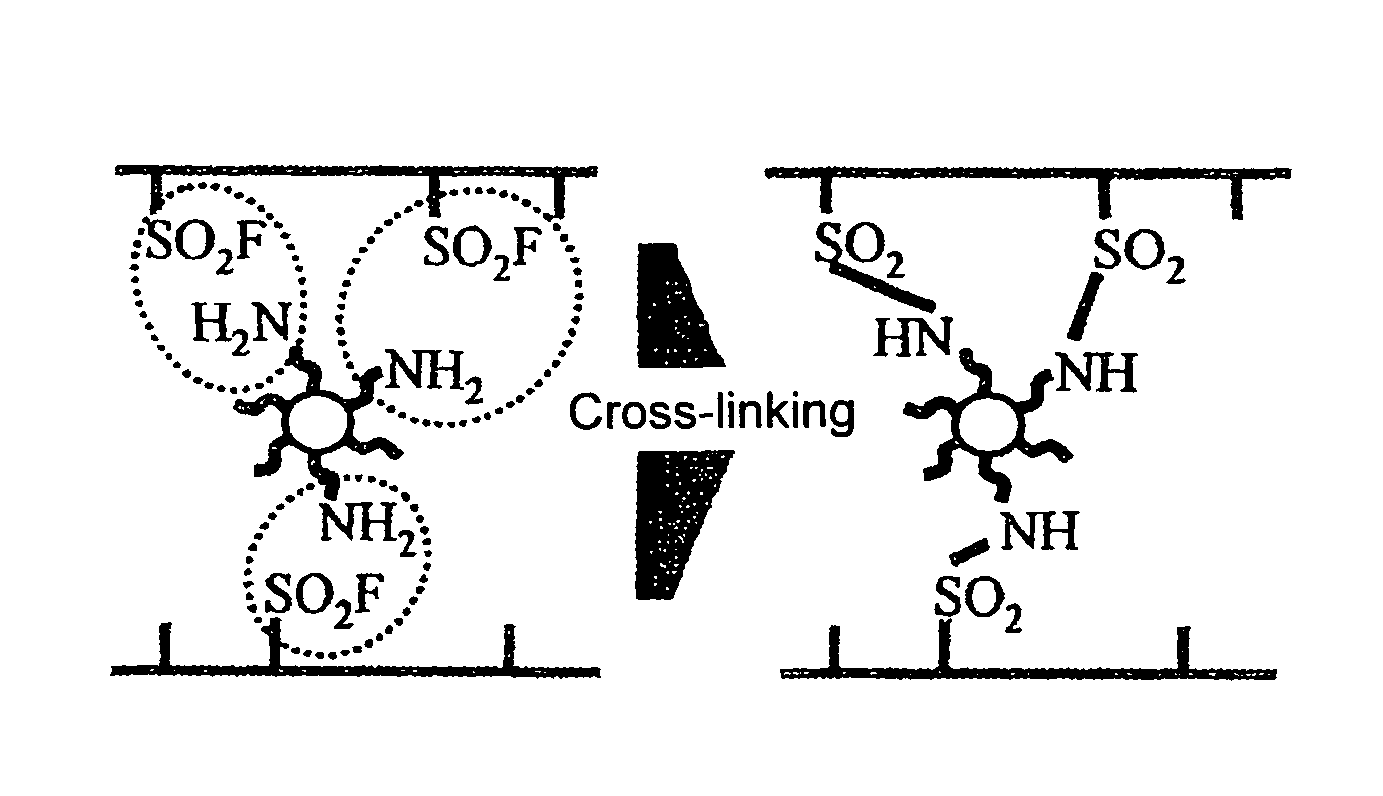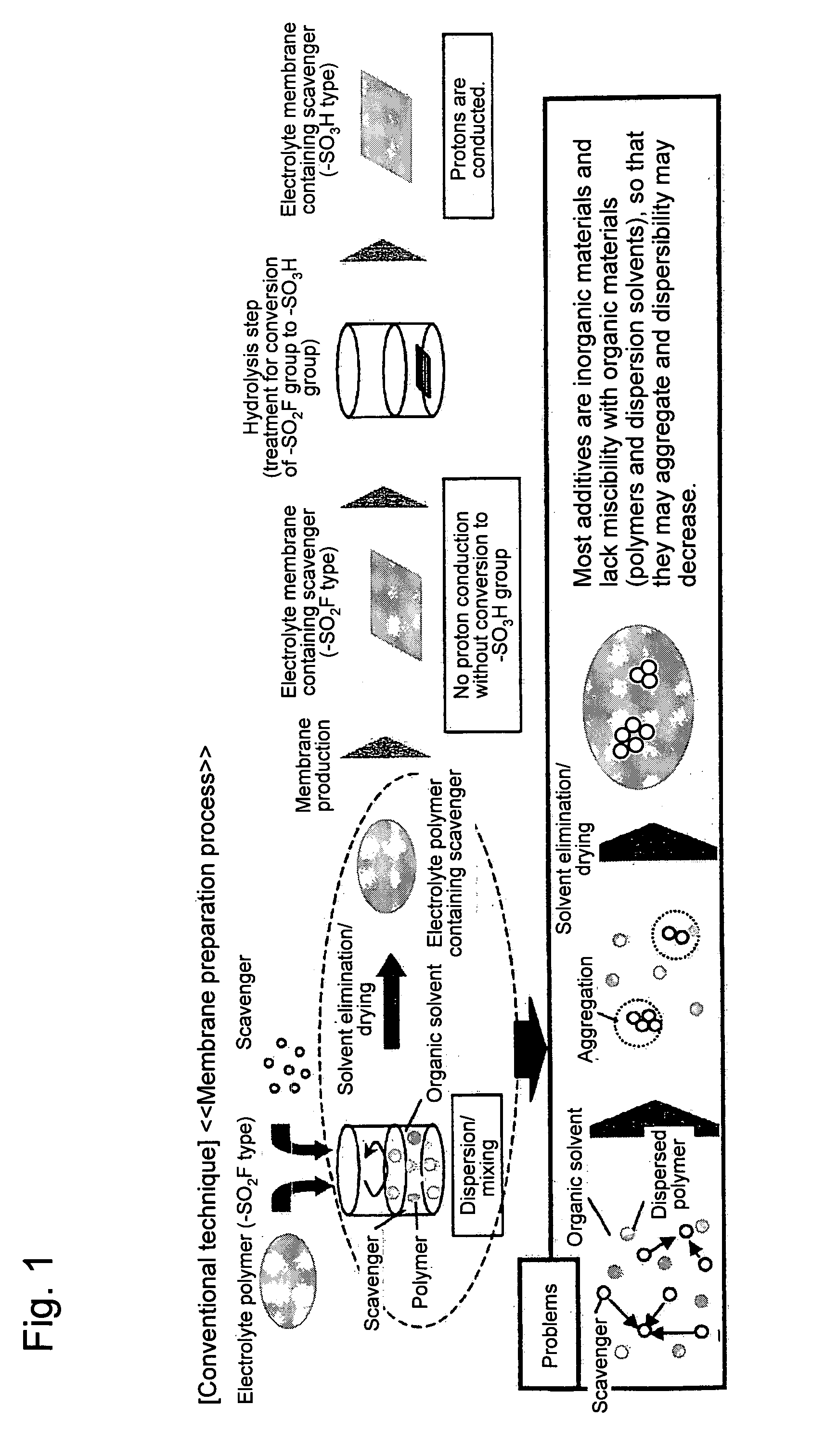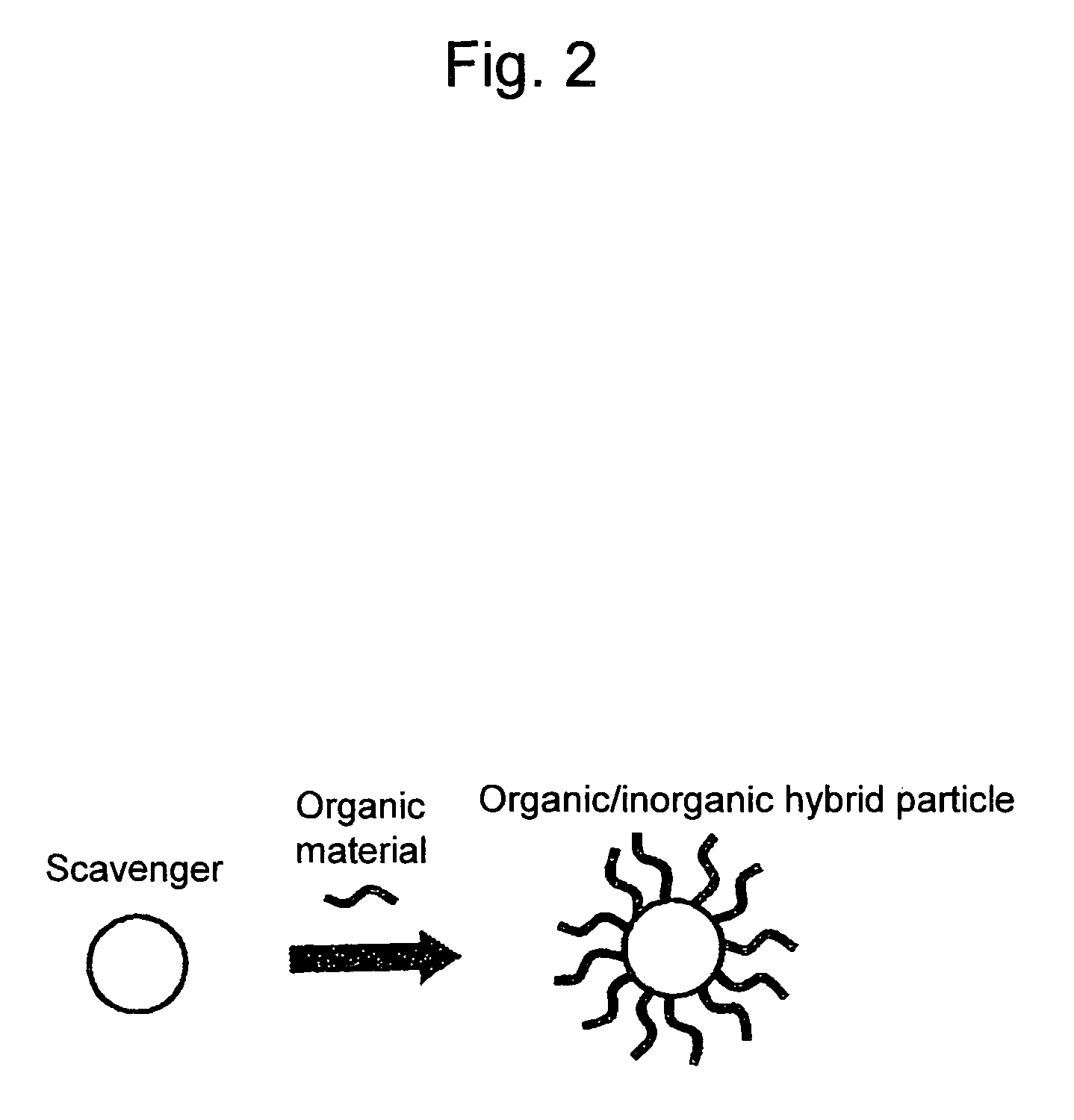Polymer electrolyte membrane, method for producing polymer electrolyte membrane, and solid polymer fuel cell
a technology of electrolyte membrane and polymer electrolyte, which is applied in the direction of electrochemical generators, sustainable manufacturing/processing, and final product manufacturing, etc., can solve the problems that the membrane cannot be sufficiently resistant to radicals, the fluoride-based and hydrocarbon-based electrolyte membrane used for solid polymer fuel cells is thinner, and the membrane preparation is not complete enough. to achieve the effect of improving moldability, fine and uniform dispersion, and improving quality
- Summary
- Abstract
- Description
- Claims
- Application Information
AI Technical Summary
Benefits of technology
Problems solved by technology
Method used
Image
Examples
example 1
[0046]CeO2 sol (mean particle size of 20 nm) was reacted with decanoic acid (CH3(CH2)8COOH) under high temperature and high pressure by hydrothermal synthesis. Thus, CeO2 powders were prepared, in which the surface was modified with the organic compounds.
[0047]The resultants were dispersed in and mixed with a Nafion fluorine-based polymer (—SO2F type) in an organic solvent. Subsequently, the solvent was removed and then a film with a thickness of 30 μM was prepared by melt-molding (polymer precursor 1). The resultant was hydrolyzed with 1 N NaOH / DMSO and 1 N sulfuric acid, so that an electrolyte membrane was obtained (polymer electrolyte membrane 1).
example 2
[0048]CeO2 sol (mean particle size of 20 nm) was reacted with perfluorooctanoic acid (PFOA; C7F5COOH) under high temperature and high pressure by hydrothermal synthesis. Thus, CeO2 powders were prepared, in which the surface was modified with the organic compound.
[0049]The resultants were dispersed in and mixed with a Nafion fluorine-based polymer (—SO2F type) in an organic solvent. Subsequently, the solvent was removed and then a film with a thickness of 30 μm was prepared by melt molding (polymer precursor 2). The resultant was hydrolyzed with 1 N NaOH / DMSO and 1 N sulfuric acid, so that an electrolyte membrane was obtained (polymer electrolyte membrane 2).
example 3
[0050]CeO2 sol (mean particle size of 20 nm) was reacted with ε-caprolactam (C6H11NO) under high temperature and high pressure by hydrothermal synthesis. Thus, CeO2 powders were prepared, in which the surface was modified with the organic compound.
[0051]The resultants were dispersed in and mixed with a Nafion fluorine-based polymer (—SO2F type) in an organic solvent. Subsequently, the solvent was removed and then a film with a thickness of 30 μm was prepared by melt-molding (polymer precursor 3). The resultant was hydrolyzed with 1 N NaOH / DMSO and 1 N sulfuric acid, so that an electrolyte membrane was obtained (polymer electrolyte membrane 3).
PUM
| Property | Measurement | Unit |
|---|---|---|
| mean particle size | aaaaa | aaaaa |
| particle sizes | aaaaa | aaaaa |
| particle sizes | aaaaa | aaaaa |
Abstract
Description
Claims
Application Information
 Login to View More
Login to View More - R&D
- Intellectual Property
- Life Sciences
- Materials
- Tech Scout
- Unparalleled Data Quality
- Higher Quality Content
- 60% Fewer Hallucinations
Browse by: Latest US Patents, China's latest patents, Technical Efficacy Thesaurus, Application Domain, Technology Topic, Popular Technical Reports.
© 2025 PatSnap. All rights reserved.Legal|Privacy policy|Modern Slavery Act Transparency Statement|Sitemap|About US| Contact US: help@patsnap.com



